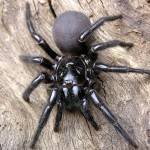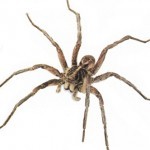Spiders
Ants
Cockroaches
Control Methods
Guidelines
Product Pests
Rats & Mice
Risk Management
Spiders
Termites
Training
Weed Management
SPIDER CONTROL
A range of spider species are regarded as pests in Australia. Their pest status can either be based on genuine health risk (eg. red-back spiders and funnel webs); nuisance (eg. the webs created indoors by daddy long-legs), personal phobias (numerous species) or a combination of all of these.
One of the most important things to be aware of in relation to spiders is their different behaviours in relation to capturing prey; this has a profound influence on where they are found. Sedentary spiders living in silk-lined burrows leap out to capture passing insects (eg. funnel web and trap door spiders); web-spinning spiders lie in wait and trap their prey (eg. black house spiders and red-backs); hunting spiders go in search of their prey (eg. the wolf spider) and others simply lie in ambush on plants, tree-bark or on the ground (eg. huntsman).
All these situations commonly occur in commercial and domestic enviroments and as such many individuals feel a need to reduce the risk of spider bites by removing spiders from their premises. The application of an effective low-dose insecticide is one of the most efficient means to achieve this. The products which are used for spider control need to have both a good level of residual activity and present very low risk for residents and the operator. Such chemical application would be concentrated in cracks, crevices and harbourage areas.
SPIDER VARIETIES
HABITS
Redback spiders are toxic. They tend to make loose webs around rubbish, under children’s toys, low ledges, in cracks and crevices, and are usually found nesting low to the ground.
HABITS
Funnel web spiders are very toxic. They favour moist, dark environments. They are most active in the warmer months, especially after rain.
HABITS
Huntsman spiders are not toxic. Huntsman spiders are not aggressive. A bite from a Huntsman spider would be painful, but rare. They tend to live under the bark of trees during the daytime and emerge at night time. They often enter houses.



